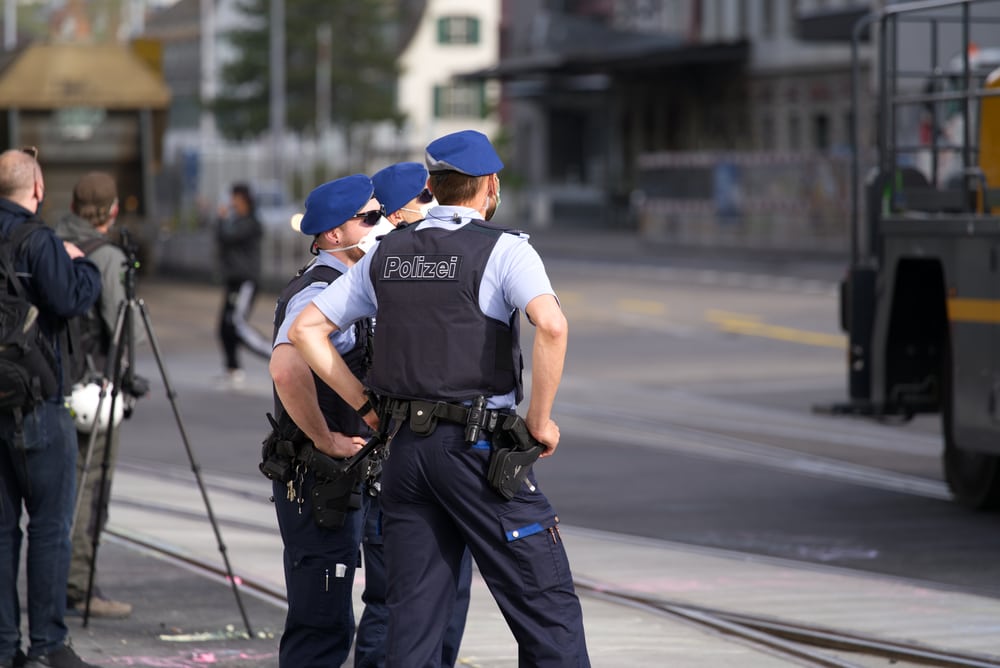Video Security: Detect events automatically
Video-assisted monitoring of areas and sites is used today in a variety of indoor and outdoor applications. The viewing of events is partly done by the human eye of the security personnel, partly the data is simply stored for later viewing. What is often missing is automatic detection and information of security-relevant objects and events.

Intelligent video analytics are software-based algorithms for the automatic evaluation of digital images from video surveillance cameras. Using various methods, they enable the detection of predefined objects and events. They also provide event and metadata and, in combination with video management systems, allow the display of analysis results and the triggering of various actions such as alerting security personnel, controlling video recordings, searching video sequences, switching I/0 devices, etc. Basic procedures are used for automated processing and evaluation of video images.
Object detection
Object recognition detects changes within a video image. For this purpose, individual image data and their differences in a series of images are analyzed. This method is primarily used for recording control to reduce data volumes and is not suitable for exact detection of safety-relevant objects as well as events.
Object tracking
Object tracking is used to detect moving objects in a video image. Objects are detected in a video image and tracked over a series of frames. This method is preferably suitable for detection tasks in applications with few disturbing variables (light, shadows, reflections, weather, crowds, etc.).
Object classification
An object classification allows the distinction of predefined object types (for example, people, animals, vehicles) in a video image. For this purpose, objects in a video image are analyzed and classified based on certain features and tracked over a series of frames. This method is suitable for detection tasks in applications with various disturbance variables.
Object identification
Object identification offers the possibility to recognize specific object characteristics (for example faces, persons, license plates) in a video image. For this purpose, objects in a video image are analyzed and identified on the basis of predefined characteristics. This method is only suitable under certain conditions and for special applications.
Object interpretation
Object interpretation enables specific object states (for example, behavior, number) to be detected in a video image. For this purpose, objects in a video image are analyzed and their states are interpreted based on predefined criteria. This method is also only suitable under certain conditions and for special applications.
Scene interpretation
Scene interpretation creates the prerequisite for evaluating certain areas in a video image differently. For this purpose, the corresponding image areas are marked (for example, fence, facade, artwork, platform, track bed) and analyzed according to the desired priority and function. This procedure is suitable for adapting the analysis modules to specific application scenarios.
Human interpretation
In addition to these basic methods, there are a number of other methods such as image comparison, image pixelation, etc. for automated processing and evaluation of video images. It is true for all methods that they support humans but cannot replace them. Therefore, a human interpretation of the evaluation results is necessary in any case. In addition, in the event of an incident, necessary measures should only be triggered after verification by trained users.
More safety and effectiveness
Intelligent video analytics are increasingly being used for a wide variety of small, medium and large-scale applications in different industries. Typical applications of intelligent video analytics are for example:
- Area monitoring for recording control,
- Camera monitoring against manipulation attempts,
- Space, perimeter and site protection against ingress and egress,
- Recognize loitering and suspicious behavior,
- Privacy protection in public and private surveillance areas,
- Fire and fire detection,
- preventive detection of suspicious objects,
- Securing critical infrastructure against attacks,
- Protection of valuable works of art against damage and theft,
- Traffic Event Detection.
The expansion of video surveillance means that the monitoring, evaluation and storage of video images is becoming increasingly personnel-, data- and therefore cost-intensive. At the same time, scientific studies show that the attention of security personnel significantly decreases after a short time when monitoring screens, and security-relevant events are no longer recognized in time.
Intelligent video analytics are therefore a preferred solution for sustainably improving the effectiveness of video surveillance systems. In this context, however, it should be noted that there can be no one-size-fits-all solutions in this regard. Due to the different requirements, the algorithms used must be specially designed and optimized for the respective applications. Otherwise, the expected results are difficult to achieve. Although there are various suppliers who want to use a rule-based concept to handle various applications simultaneously with one analysis module, it has been shown in practice - outside laboratory conditions - that application-based concepts consistently deliver better results.









